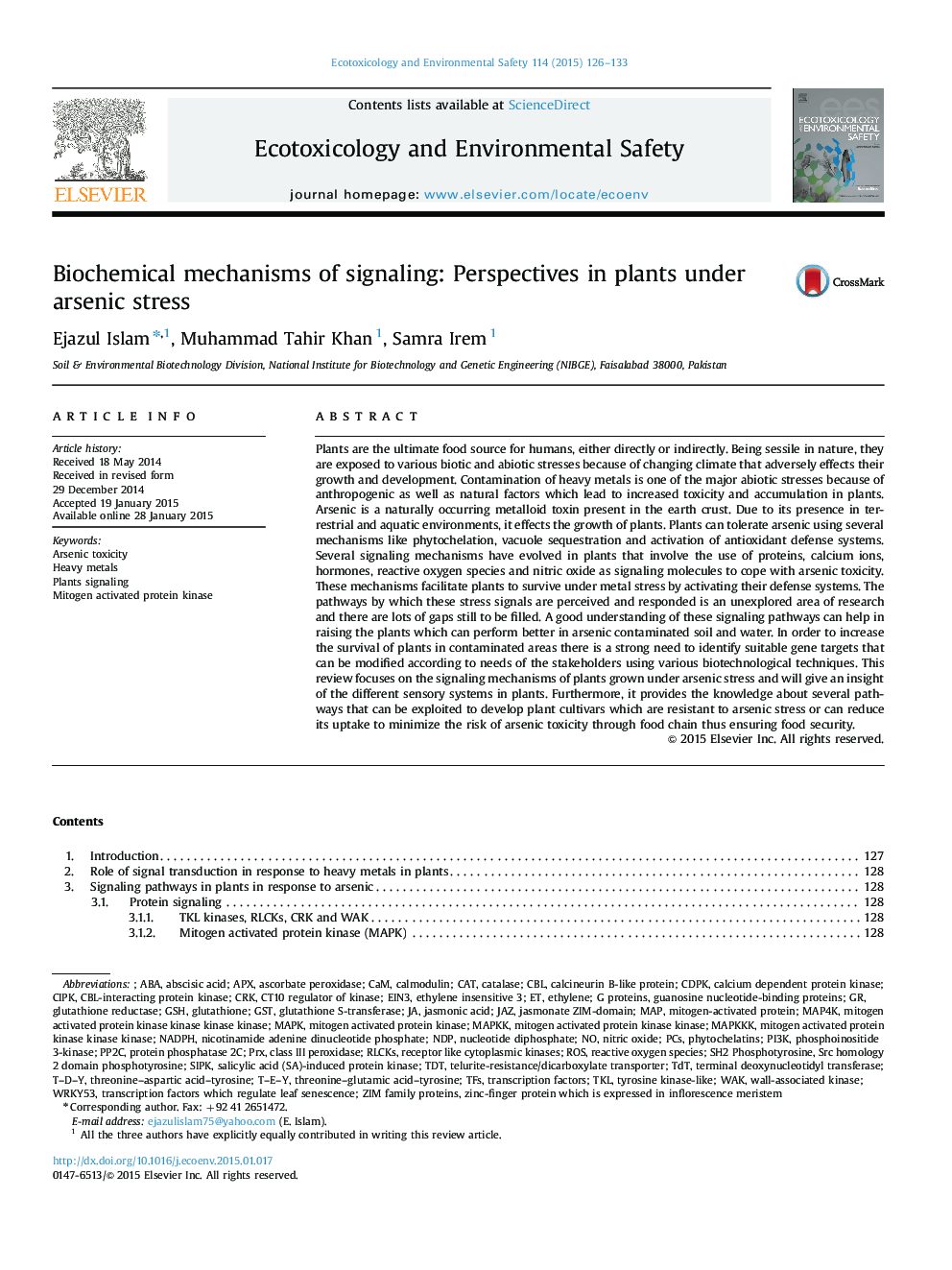| کد مقاله | کد نشریه | سال انتشار | مقاله انگلیسی | نسخه تمام متن |
|---|---|---|---|---|
| 4419812 | 1618949 | 2015 | 8 صفحه PDF | دانلود رایگان |
• Arsenic stress signals are transduced into cell through specific trans-membrane proteins.
• ROS cause phosphorylation of several MAPKs to transmit arsenic stress signals.
• NO and hormonal signals enhance antioxidant activities and GSH metabolism, respectively.
• MAPK signaling alternates the activity of several transcription factors.
• Calcium signaling regulates calcium dependent kinases for plants' survival.
Plants are the ultimate food source for humans, either directly or indirectly. Being sessile in nature, they are exposed to various biotic and abiotic stresses because of changing climate that adversely effects their growth and development. Contamination of heavy metals is one of the major abiotic stresses because of anthropogenic as well as natural factors which lead to increased toxicity and accumulation in plants. Arsenic is a naturally occurring metalloid toxin present in the earth crust. Due to its presence in terrestrial and aquatic environments, it effects the growth of plants. Plants can tolerate arsenic using several mechanisms like phytochelation, vacuole sequestration and activation of antioxidant defense systems. Several signaling mechanisms have evolved in plants that involve the use of proteins, calcium ions, hormones, reactive oxygen species and nitric oxide as signaling molecules to cope with arsenic toxicity. These mechanisms facilitate plants to survive under metal stress by activating their defense systems. The pathways by which these stress signals are perceived and responded is an unexplored area of research and there are lots of gaps still to be filled. A good understanding of these signaling pathways can help in raising the plants which can perform better in arsenic contaminated soil and water. In order to increase the survival of plants in contaminated areas there is a strong need to identify suitable gene targets that can be modified according to needs of the stakeholders using various biotechnological techniques. This review focuses on the signaling mechanisms of plants grown under arsenic stress and will give an insight of the different sensory systems in plants. Furthermore, it provides the knowledge about several pathways that can be exploited to develop plant cultivars which are resistant to arsenic stress or can reduce its uptake to minimize the risk of arsenic toxicity through food chain thus ensuring food security.
Journal: Ecotoxicology and Environmental Safety - Volume 114, April 2015, Pages 126–133
